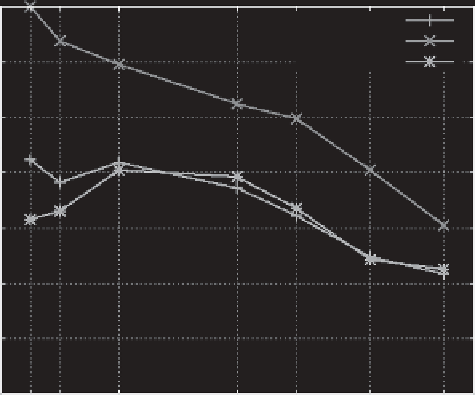Database Reference
In-Depth Information
1
F-measure*
Precision*
Recall
0.9
0.8
0.7
0.6
0.5
0.4
0.3
k=2k=4
k=8
k=16
k=20
k=25
k=30
Figure 9.8 Clustering comparison by F-measure.
Attack Model
The aim of these two methods is to protect individuals in trajectory data against
the
linkage attack model
. In other words, the attack model is similar to that
described in the previous section. The only difference is that the adversary
knows that each location in the anonymized trajectories must be in the original
data. This is an important point because the linkage of a location with a specific
user could reveal the exact location rather than the generalized one. Therefore,
it is possible to identify two attacks: (a) finding an anonymized version of a
specific real trajectory; and (b) determining if a location belongs to a specific
trajectory.
Privacy-Preserving Techniques
How is it possible to guarantee that the probability of success of the attack just
described is very low while preserving the utility of the data for meaningful
analyses?
The countermeasure against the attack in point (a) uses microaggre-
gation to partition the set of trajectories into several clusters, by minimizing
the sum of the intracluster distances. The cardinality of each cluster must be
between
k
+
1and2
k
−
1. The purpose of setting
k
as the cluster size is to obtain
trajectory
k
-anonymity. Given a cluster, the algorithm takes a random trajectory
and attempts to cluster each unswapped location
l
of this trajectory with another
k
−
1 unswapped locations. These locations must belong to different trajectories
and the following properties have to be satisfied: (1) the time stamps of these
locations differ by no more than a specific time threshold; (2) the spatial coor-
dinates differ by no more than a space threshold. Given a cluster, random swaps

